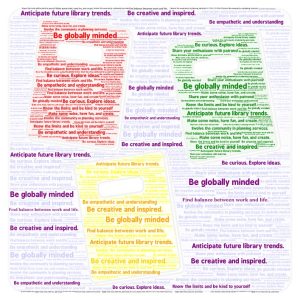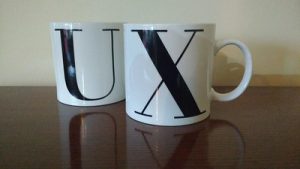@michael and fellow classmates,
“Provide a brief overview of the technology or service as well as the institution. How does it align with participatory service? How does it extend or enhance the mission of the institution?”
Technology is constantly improving and changing and this would include artificial intelligence (AI) and robots. These tools are being used in information centers and librarians, who want successful libraries, are innovating ways to incorporate them into public service. Tella and Ajani, state that the concepts of AI and robots can overlap a little, but to summarize, AI is the brain and the more human aspects of the technology, while the parts function as the robot itself (2022). One type of robots, humanoid robots, can complete tasks both behind what the patrons may see, to giving simpler instructions and information to them. They can also be used as teaching tools and, additionally, to answer simple reference questions, such as with chat bots or humanoid robots.
Having robots assist in library service would not only free up time for staff, and provide faster and more effiecient service for patrons, but they would also help facilitate interaction for both of the parties. Who would not interact, or at least notice, a robot in the library? Adults and children can engage with robots, and each other, as they navigate a project or goals in a library program. Interacting with each other, using robots and other AI, is part of a library’s mission of civic engagement and learning.
An action brief for library management:
Convince library management, that by including a humanoid robot as a part of public user service, they will reduce staff workload and increase task efficiency, which will promote a happier enviroment for both patrons and employees, because each individual will gain something from the transaction.
An action brief for fellow-staff members:
Convince fellow employees, that by allowing humanoid robots to be a part of giving excellent public service and by being open to leaning about how to work with this technology, they will reduce stress of higher workloads, and less staff, increasing the likelihood of more positive transactions which will demonstate the library’s value to stakeholders and the community, because support for an information space to survive matters.

created with Flux Image AI
“Who will you help?”
Using robots, a form of AI (artificial intelligence), in libraries will assist patrons, first and foremost, with accurate and efficient service. Their use will supplement, not replace, that of a set human workforce by reducing the ever-piling demands that their human counterparts face in a library.
“Where did you find inspiration? Where has this already been implemented?”
I believe I first found interest when viewing some of the learning materials, in another Library and Information Science class, that I was taking. It had to do with the robot couriers in an Austrailia library (see article below) and I have also heard, briefly, about the robots that greet patrons. This technology has been applied internationally, including places such as:
Roanoke, VA (USA)
Links to an article and two Youtube videos on the prescence of robots in libraries:
Robot couriers in the National Library of Australia: https://www.abc.net.au/news/2018-08-17/robot-couriers-set-efficiency-in-motion-at-national-library/10118356
(Black, 2018)
Pepper the robot in the Roanoke Libraries : https://www.youtube.com/watch?v=xs0JSI3wsck
(Tella & Ajani, 2022)
EeeBot, an assistive shelf scanner: https://www.youtube.com/watch?v=vltpF_Hji_U
(Andoy, M.)
“What will the guidelines and policies surrounding the program look like?”
Including management assisting in writing and approving policies regarding AI, a library board, and staff, would feel a sense of ownership in helping construct the policies as well. Example policies could be acquired from other information centers, with the probable consultation of a robotics company.
“What do you want to include in guidelines for use or implementation?”
Training for all staff should be required, however, the most training would include staff who regularly interact with the AI and patrons. Basic guidelines would include how to ensure the basic operations of the robot and safety. The more staff will be required to work with the robots, they more training they will need to have on how to have it fuction and perform tasks in the library environment.
Having a robotics company help train selected staff at the library. They could then work together to train other staff. An estimate of time to train would be three months and would generally have to occur after the library is closed. However, closer to the launch date, some patrons could be included, which could happen during hours the space is open to the public.
What’s a reasonable timeline for this project? What are the project flow dependencies? Who has to say “yes?” What are the planned alternatives if there is a “no
I would say that a reasonable timeline would range from no less than six months with research, training, and implementation, but no longer than a year because of how fast this technology is changing. The flow of the project would first depend on how long researching, AI and the particular robot the library is wanting to acquire, will take. Financial considerations would be a large part at this point of the planning.
To be successful, the project would have to be supported by both management and frontline library staff. Management would have to approve of the cost, and also the possible consequences of having this technology. Frontline staff would have to be open to being trained on, and working with, the technology when helping members of the public. For staff hesitant to adopt working with this technology, a session could be given in closed library hours, educating employees about the technology and how it can help them in their jobs. Of course, if there is still pushback at this point of time, I don’t see robots as so integral that resistant employee couldn’t have the option of working without a robot, humanoid or otherwise. While we should treat this techology with respect, it is a tool for library professions to use, so they can more successfully perform in their jobs.
How will the initiative be marketed?
Posters by the desks and popular areas of the library would be a traditional way of marketing the technology. Online, on the website, social media accounts, and, perhaps, blog of the library, a coutdown to the service could be initiated. After the service is launched, some of the advertisements could still remain. Robots could also be introduced at STEM, and other types, of programs facilitated by the information space. Local news stations could also be alerted to what is happening. Who knows? If the service is featured locally, it may go national.
” How will the initiative be evaluated and/or expanded?”
Evaluation of the service of AI in libraries will primarly have to be evaluated in live service. Test runs can be done before official launch, and evaluations and surveys to the public and employees can occur after, but expansion can only happen after the service is looked at in real scenarios. Then it can be decided if expansion is even appropriate, however, research should be done on this topic beforehand.
References
Andoy, M. (2022, March 5). EeeBot, shelves scanner robot : Tampines Singapore Public Library : Latest trends and technologies [Youtube video]. Retrieved from https://www.youtube.com/watch?v=vltpF_Hji_U
Black, M. (2018, August 16). High-tech robot couriers set effienciency in moton at the National Library of Austrialia. Retrieved from https://www.abc.net.au/news/2018-08-17/robot-couriers-set-efficiency-in-motion-at-national-library/10118356
De Sarkar, T. (2023, January). Implementing robotics in library services. Library Hi Tech News, 40(1), 8-12. https://doi.org/10.1108/LHTN-11-2022-0123
Tella, A. & Ajani, Y. (2022, July 25). Robots and public libraries. Library Hi Tech News, 39(7), 15-18. https://doi.org/10.1108/LHTN-05-2022-0072
WSLS 10. (2018, August 30). Roanoke Libraries welcome their robot helper, Pepper [Youtube video]. Retrieved from https://www.youtube.com/watch?v=xs0JSI3wsck







